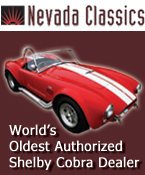
02-25-2015, 06:07 PM
|
 |
CC Member

|
|
|
Join Date: May 2009
Location: American Fork,
Ut
Cobra Make, Engine: 66 Cobra
Posts: 930
|
|

 Not Ranked
Not Ranked
 Rocker Geometry
Rocker Geometry
I was wondering if anyone on the forum had tried the Mid-Lift rocker geometry method? It was first patented by Jim Miller in 1982. This YouTube Video is a variation of that method but just looks at the valve side at mid-lift. This is not the centering the rocker roller on the valve stem method.
[ame="https://www.youtube.com/watch?v=o5is9BsH5OU"]https://www.youtube.com/watch?v=o5is9BsH5OU[/ame]
I am building a spare engine and am pondering taking some detailed measurements to determine if the ratio and lift are more accurate using this method.
__________________
Wayne
"Everything is alive. If you get angry at a vehicle or the trans, it won't fix until you apologize and say you are sorry." "The vehicle always knows what it is doing and what the cause of it's bad feeling is. If you ask it humbly what the problem is, it will tell you. Then you and it will both be happy."
Gil Younger
|


